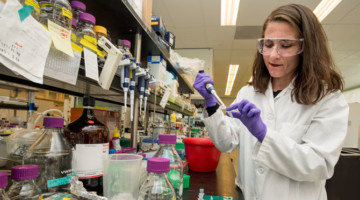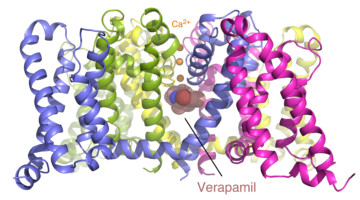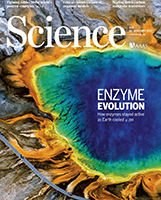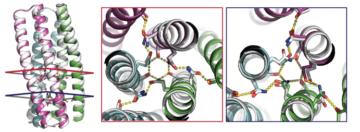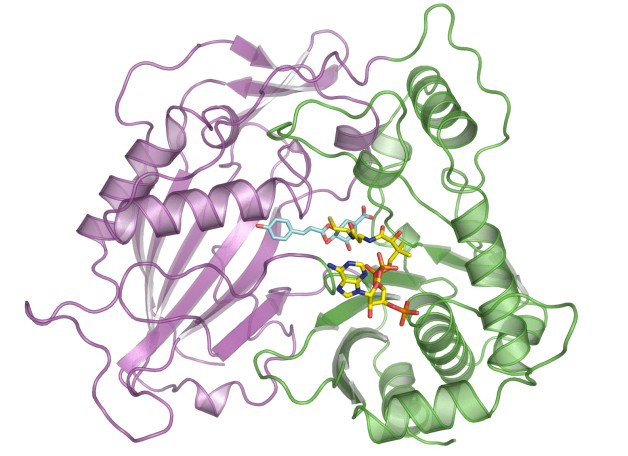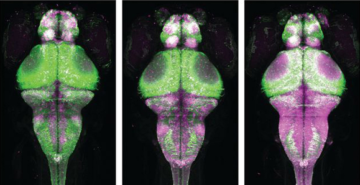A protein used by common soil bacteria is providing new clues in the effort to convert aryl compounds, a common waste product from industrial and agricultural practices, into something of value. This Joint BioEnergy Institute (JBEI) study, which involved ALS Beamline 8.2.2, targets LigM for its role in breaking down aromatic pollutants. Read more »
Self-Assembly of a Programmable DNA Lattice
The use of DNA for nanotechnology has gained interest because it is a highly “programmable” polymer with “sticky ends,” allowing the self-assembly of molecular scaffolds for other proteins and molecules. Their high-resolution structures will help map new routes toward the rational design of self-assembling 3D DNA crystals. Read more »
Two Basic Mechanisms of Cardiovascular Drugs
The structures of proteins controlling calcium-ion transport through cell membranes have been revealed, bound to two drugs known as calcium channel blockers. The discovery might accelerate the development of safer and more effective drugs for treating cardiovascular disorders such as high blood pressure, chest pain, and irregular heartbeat. Read more »![]()
![]()
Evolutionary drivers of thermoadaptation in enzyme catalysis
With early life likely to have existed in a hot environment, enzymes had to cope with an inherent drop in catalytic speed caused by lowered temperature. Here, researchers characterize the molecular mechanisms underlying thermoadaptation of enzyme catalysis in adenylate kinase using ancestral sequence reconstruction spanning 3 billion years of evolution. Read more »
Validation of Novel Proteins Inspired by Nature
Designed proteins containing hydrogen-bonding modules have been validated by crystallography and SAXS. The ability to design synthetic molecules that combine the specificity of DNA-like binding with protein function opens up huge opportunities for the fields of synthetic biology and materials science. Read more »
Understanding the Key to Henipavirus Infection
The Hendra virus was the first member of the genus Henipavirus, an emergent group of viruses with a high mortality rate. Knowledge of the protein structure that mediates Hendra entry into host cells could enable the design of antigens with improved immunogenic response. Read more »
Reducing Plant Lignin for Cheaper Biofuels
Scientists have identified and validated a novel approach to reducing lignin in plants by tweaking a key lignin enzyme. Their technique could help lower the cost of converting biomass into carbon-neutral fuels to power cars and other sustainably developed bio-products. Read more »![]()
A Designed Protein Maps Brain Activity
A team of scientists designed and validated via x-ray crystallographic studies a fluorescent protein (CaMPARI) that allows the permanent marking of active brain cells. The protein was then used to study live changes via fluorescence in the active nerve cells in brains of fruit flies, zebrafish, and mice. Read more »![]()
![]()
Ancient Proteins Help Unravel a Modern Cancer Drug’s Mechanism
The cancer drug Gleevec is extremely specific, binding and inhibiting only the cancer-causing tyrosine protein kinase Blc-Abl, while not targeting homologous protein kinases found in normal, healthy cells. Researchers at the ALS have uncovered exactly why that is the case, pointing to novel methods of drug discovery. Read more »![]()
![]()
Validating Computer-Designed Proteins for Vaccines
Computationally designed proteins that accurately mimic key viral structures can help produce better vaccines. The resulting protein structures, validated at the ALS, encourage the further development of this strategy for a variety of vaccine targets, including HIV and influenza. Read more »![]()
![]()
